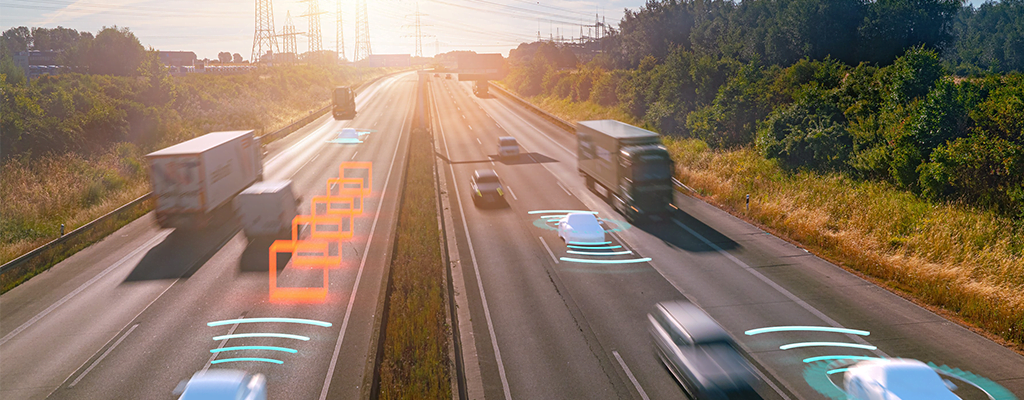
In recent years, innovations in car safety have shifted away from structural changes to cars and features designed to protect our bodies from collisions. New developments have all been technology-led: software designed to anticipate hazards and react accordingly; sensors that give our vehicles the ability to perceive those hazards. Usually, it comes down to mitigating the unreliability of human drivers. Where a human might temporarily lose concentration, cameras and the software that monitors the information from them do not.
When it comes to business drivers and large fleets, features that make as much of a difference as some of the below technologies could make a profound positive impact on road safety; improving safety of employees and saving money.
A crucial point to be aware of when using any vehicle that utilises these smart features is that they work differently depending on which brand and model you’re driving. It’s essential that we understand how they work, whether they’re switched on, and how to use them safely. A vehicle familiarisation course from IAM RoadSmart is a perfect way to get acquainted with these features.
Here’s a list of some of the most compelling new safety features that have become popular during the last decade.
Autonomous Emergency Braking (AEB)
Autonomous Emergency Braking is designed to stop the vehicle in an emergency situation without input from the driver.
AEB has already been found to drastically reduce collisions. A 2015 study by The European New Car Assessment Programme (Euro NCAP) and Australasian NCAP found that fitting vehicles with AEB led to a 38% reduction in rear-end crashes.
Thatcham Research says that AEB is “probably the most important development in car safety since the seat belt and could save an incredible 1,100 lives and 122,860 casualties in the UK over the next decade.”
Adaptive Cruise Control (ACC)
The potential of ACC is exciting. The ability for vehicles to follow the flow of traffic helps remove some of the human risk associated with driving. Maintaining a safe gap from the vehicle in front is an additional bonus. ACC is also a precursor to fully autonomous driving.
However, evidence to support the claim that ACC is having a beneficial impact on road safety is elusive, and ACC has been found to be less efficient, consuming more fuel in the vehicle using the tech, and also amplifying speed variations in vehicles following the ACC car, reducing their fuel efficiency too.
Lane keeping assist
Lane keeping assist covers a range of technologies, some of which alert drivers with bells or vibrations if they start to wander from their lane, while others are able to control the steering to actively keep the vehicle in its lane.
Euro NCAP includes what it calls Lane Support in it’s testing, and rewards both lane keeping assist and emergency lane keeping assist (the latter taking action only if a developing emergency is detected, such as when the vehicle is about to run off the road, but much more aggressive steering intervention will take place).
Lane keeping assist systems vary significantly between vehicles – some will take control of steering while others will warn the driver without having any control of steering. It’s therefore crucial that drivers are aware of exactly how lane keeping assist works in their specific vehicle.
Blind spot detection
Another feature deemed important and reliable enough to be rewarded by Euro NCAP, blind spot detection monitors both sides of the vehicle and warns the driver when other vehicles are in the blind spot.
In the USA, According to 2013 statistics from the National Highway Traffic Safety Administration (NHTSA), about 840,000 accidents and 300 deaths are attributable to blind-spot issues each year1.
Cross-traffic assist
Ideal for reversing out of a driveway onto a busy road, and other situations in which reversing is necessary but vision is obstructed – this technology uses sensors to detect oncoming vehicles as the driver emerges.
Reverse park assist
Here at IAM RoadSmart we would prefer every driver to have the confidence and capability to effortlessly reverse park whenever required. The reality, however, is that many road users shudder at the thought of reverse parking. This technology shoulders the burden for drivers and handles the manoeuvre automatically.
Electronic Stability Control (ESC)
ESC is highly effective in helping the driver maintain control of the car, thereby avoiding or reducing the severity of crashes. Electronic Stability Control (ESC) is a technology that improves the vehicle’s stability by detecting and reducing loss of traction.
Like the most important safety features we have, ESC is now a legal requirement on all new cars.
As new technology develops and vehicles become more advanced, we can expect to see more safety innovations like these appear.
It is of utmost importance that drivers understand these features so that they’re utilised safely and effectively. IAM RoadSmart can help. Our Vehicle Familiarisation course is a perfect start; get in touch and see how we can help you or your drivers protect themselves and your company.


